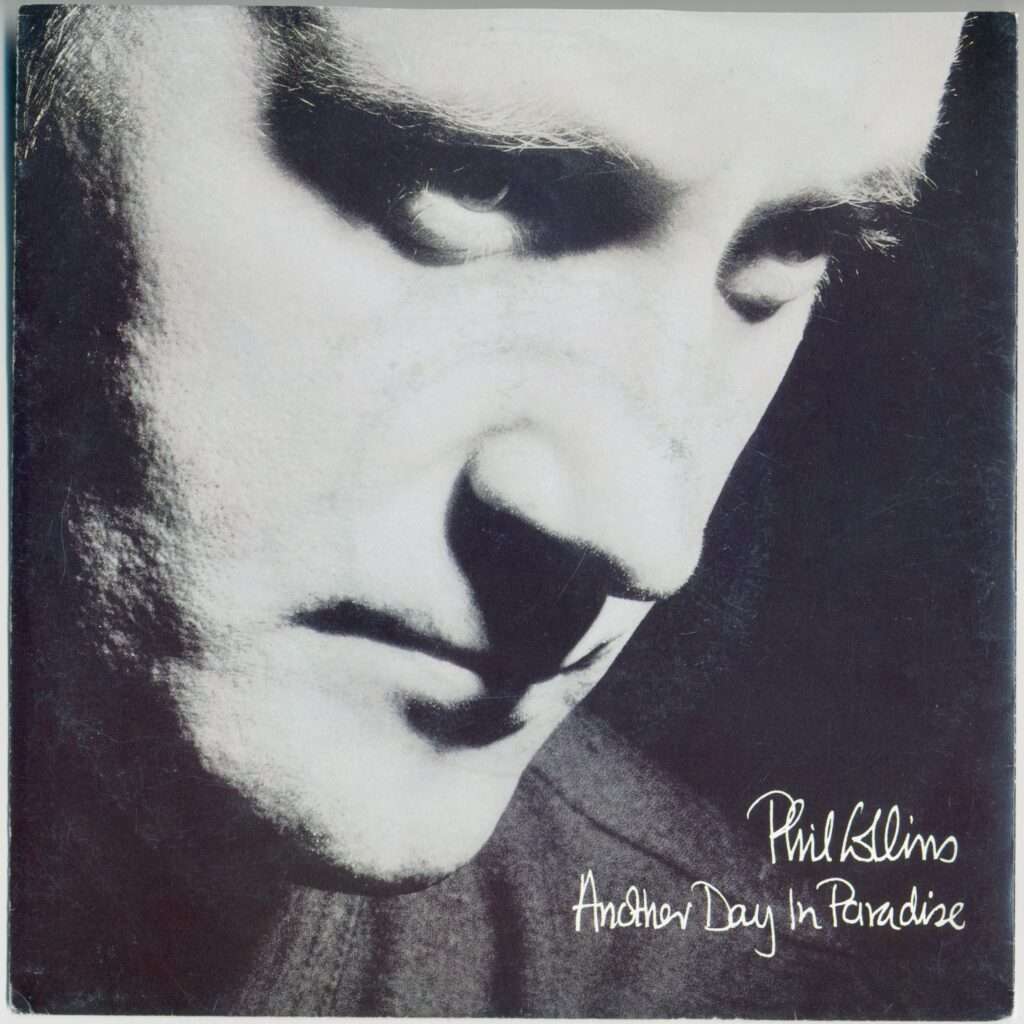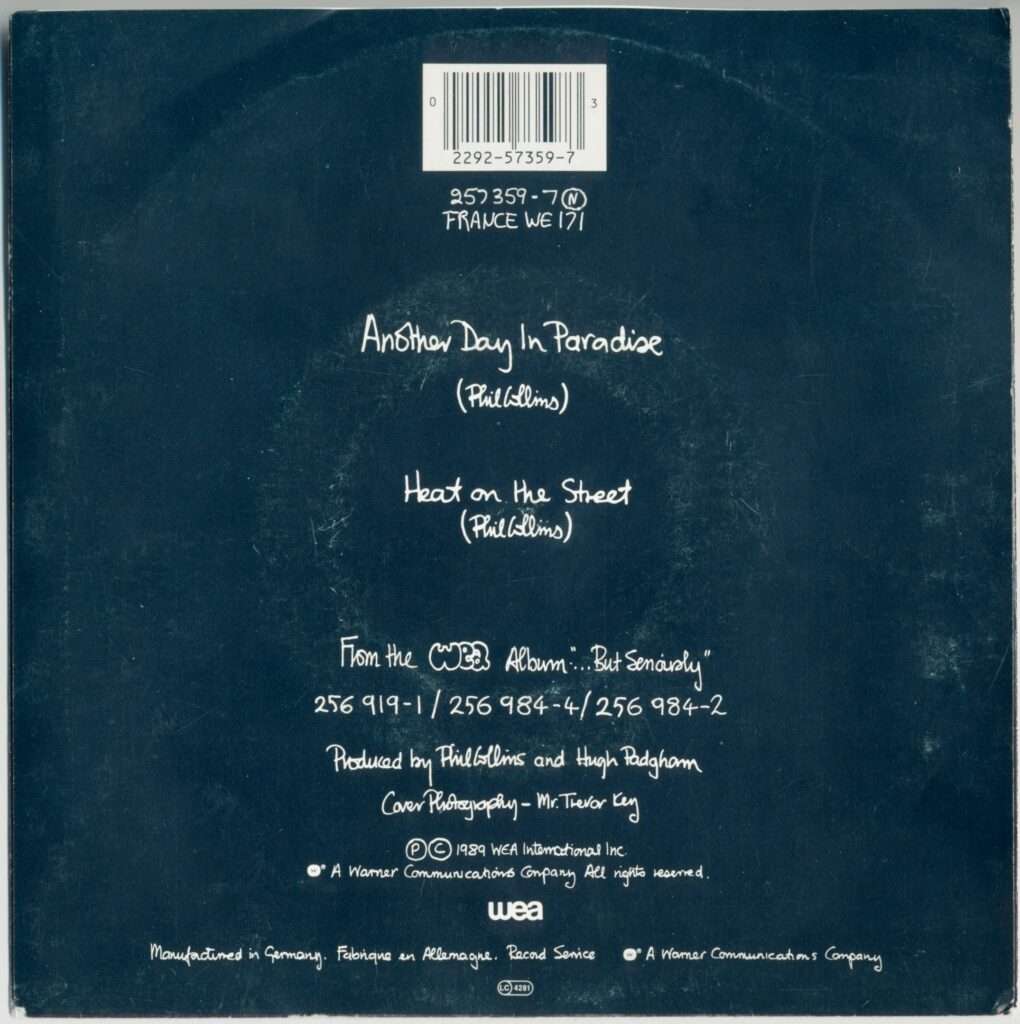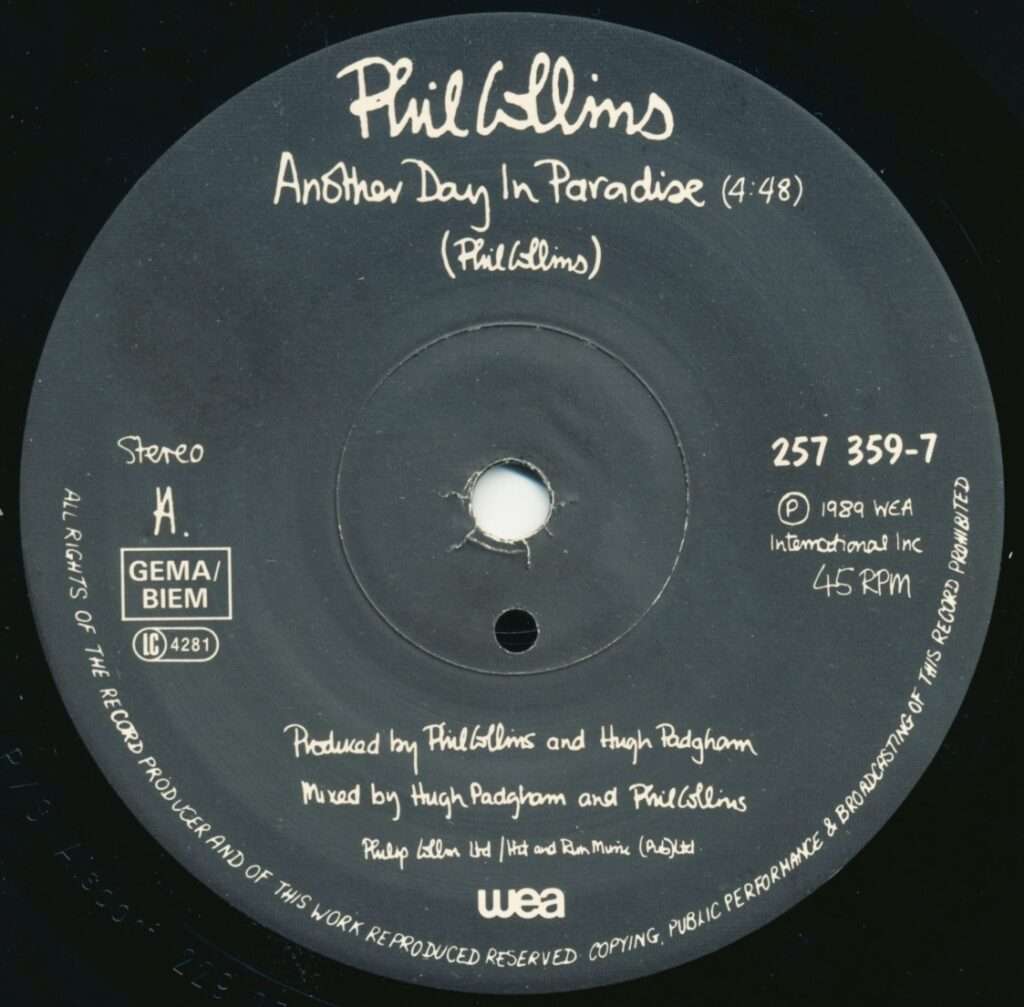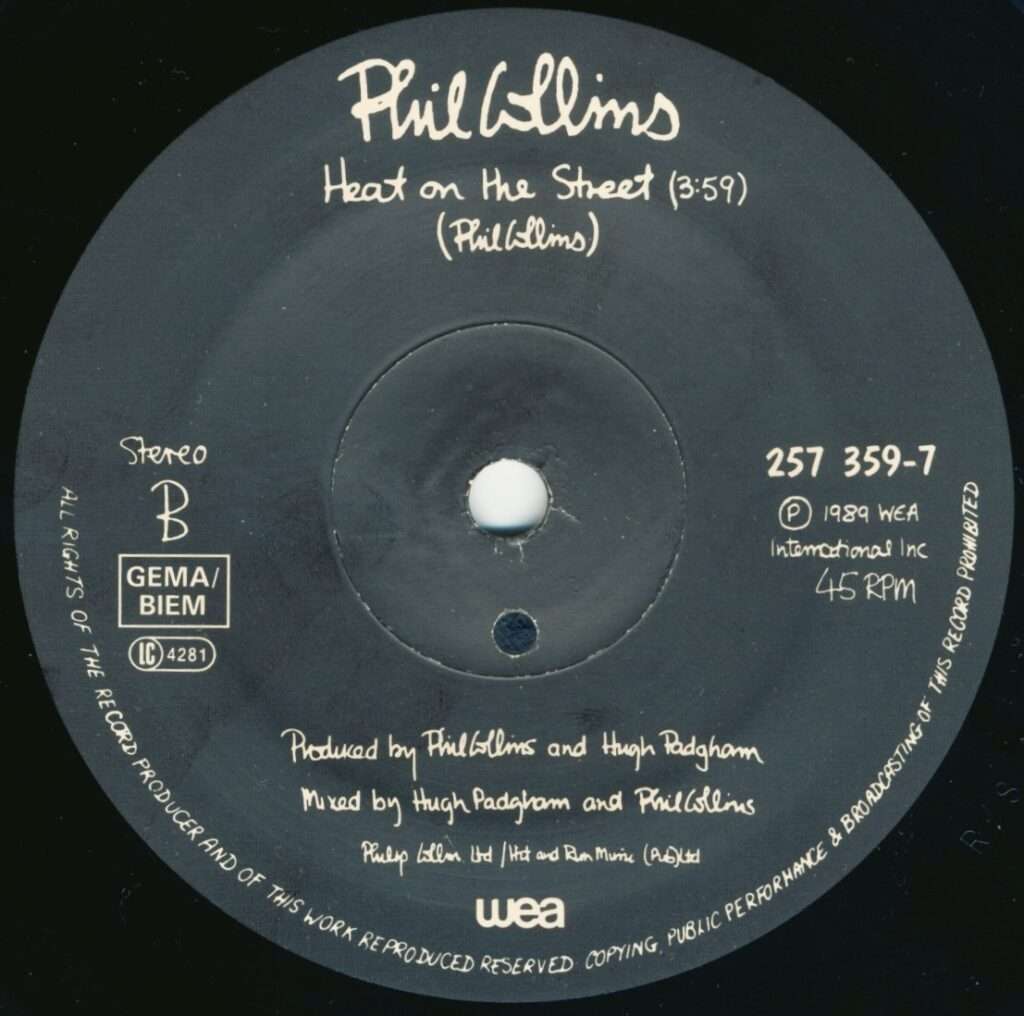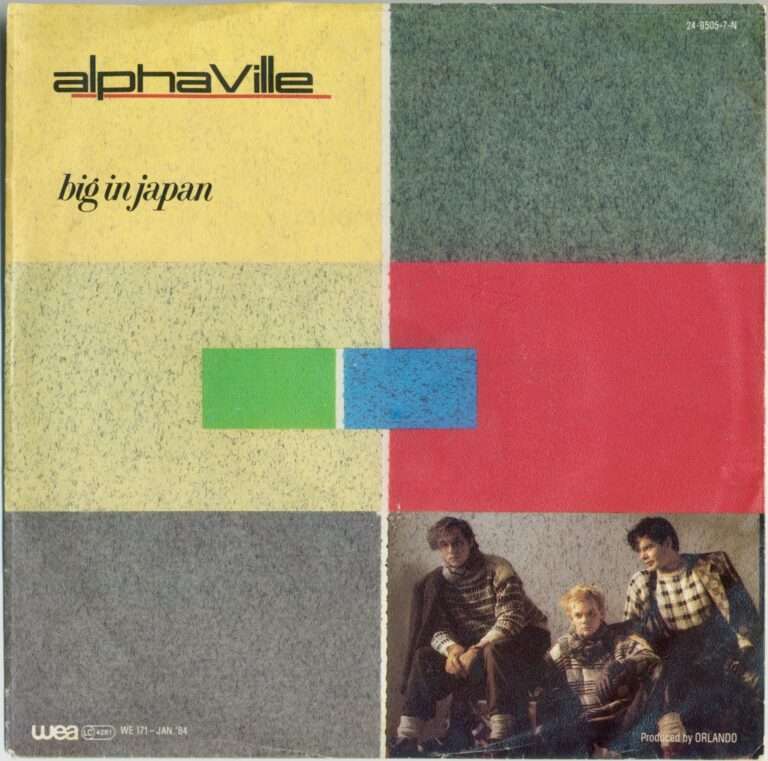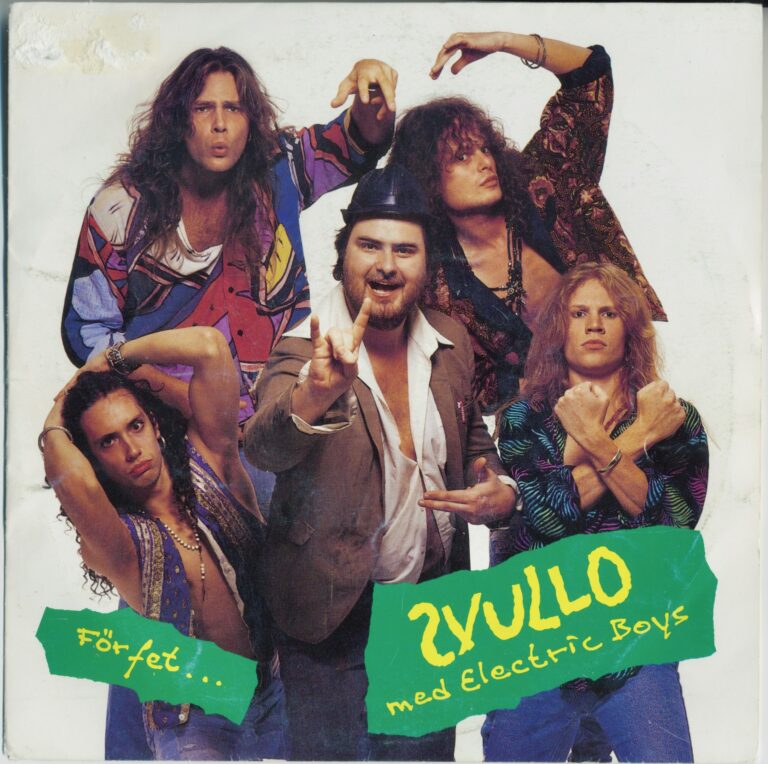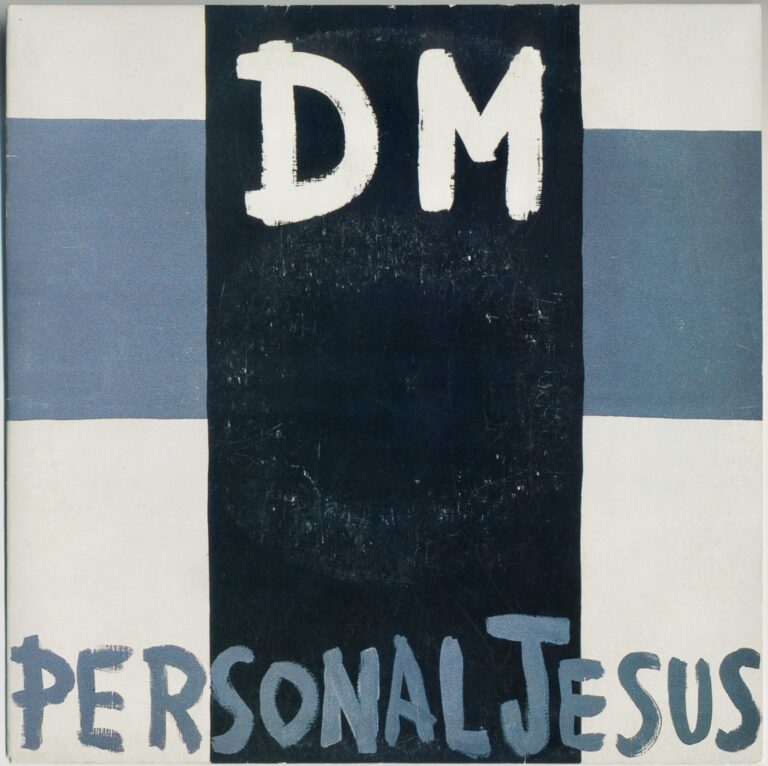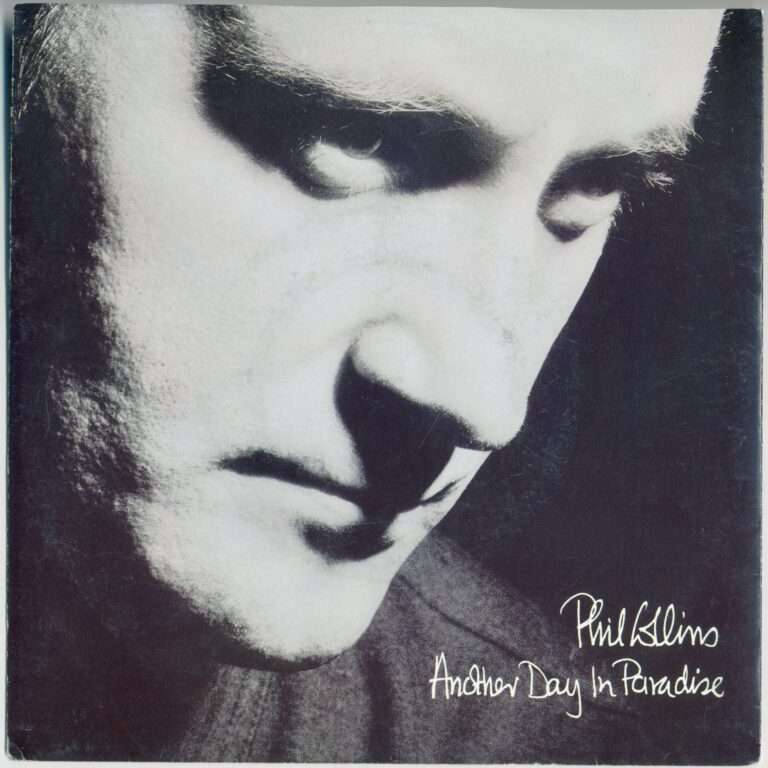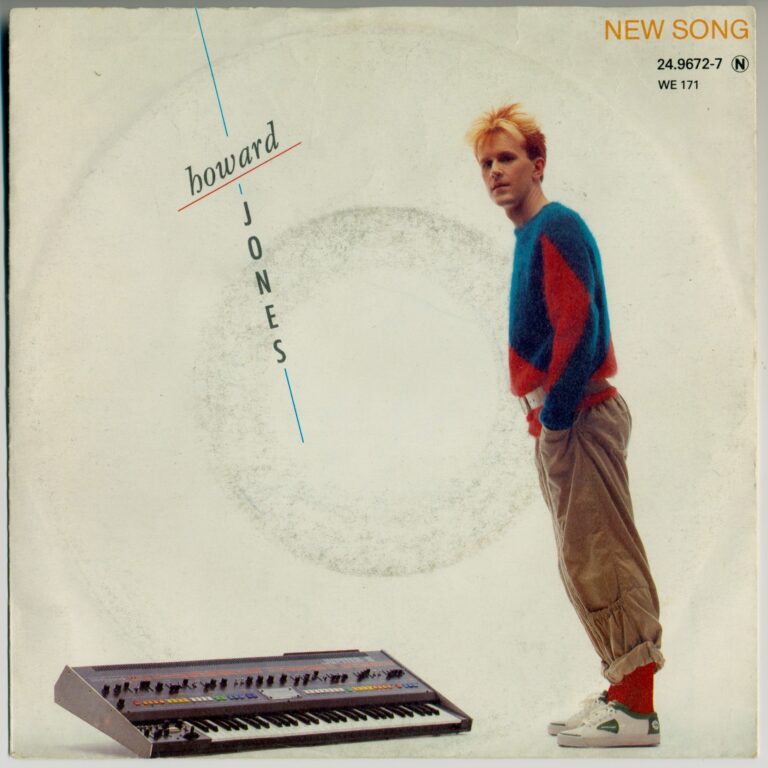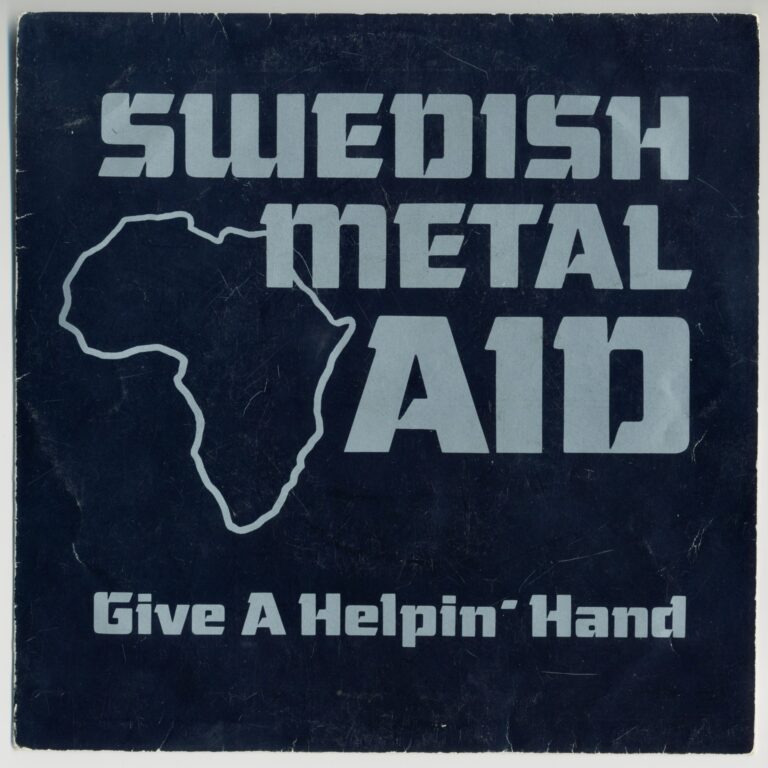The photograph on the 1989 European 7-inch single of Phil Collins’ “Another Day in Paradise” is a direct, unsmiling close-up of the artist’s face. It was a deliberate choice, signaling that the light, dance-pop sound of his previous work was over. The cover, taken by celebrated photographer and innovator John Trevor Key , demanded that the listener take both the man and his message “more seriously”. The simple, black-and-white image stripped away the trappings of the late-80s pop star. It was a visual mirror of the track inside: a song that challenged listeners to confront a difficult reality.
The seed of “Another Day in Paradise” was sown during Collins’ time in Washington, D.C.. He was so struck by the sight of people without adequate shelter “within viewing distance of Capitol Hill” that he called it an “extraordinary contradiction”. Initially, the working title was simply “Homeless”. This personal encounter, along with witnessing individuals sleeping on an outdoor grill after one of his concerts, anchored the song in a tangible, real-world observation. This was a return to a theme Collins had explored before, notably with Genesis on the track “Man on the Corner”.
The song’s power comes from Collins’ own sense of unease. He confessed to feeling “awkwardness” and “complicity” when confronted with the unhoused, admitting he, too, had walked past someone. He felt he was “doing the same thing as everybody else”. Instead of a sanctimonious lecture from a wealthy artist, the song became an exploration of a “universal human failing”. The lyrics are a mirror reflecting a shared moral dilemma, which shifts the focus from a simple critique of social apathy to the “psychology of the onlooker”. The core message is embedded in the repeating, ironic refrain: “Oh think twice / ‘Cause it’s another day for you and me in paradise”. The term “paradise” highlights the profound societal detachment from the suffering described.
Despite this deeply personal and complex composition, which featured David Crosby on backing vocals , the song was met with immediate, intense controversy. Critics accused Collins, a multi-millionaire, of “profiteering from homelessness”. Some described the song as a “corniest multi-millionaire-notices-homelessness-from-gold-plated-limousine ballad ever recorded”. Adding fuel to the fire were reports that he had moved to Switzerland, known for its less-punishing tax regime.
Yet, the immense public response suggested that the song’s message struck a “powerful chord” with a broad audience. The song quickly became a worldwide commercial success , becoming the last Billboard Hot 100 number one of the 1980s and the first of the 1990s. It won the Grammy Award for Record of the Year in 1991. The track even conquered the charts in faraway Sweden, where it reached the number one position on the official national singles chart, “Sverigetopplistan,” and was certified Platinum for over 50,000 units sold. Furthermore, in Sweden, the song spent eight weeks on the influential radio chart “Trackslistan,” peaking at number 1 and reaching number 21 on the year-end list for 1989.
“She calls out to the man on the street / Sir, can you help me? / It’s cold and I’ve nowhere to sleep / Is there somewhere you can tell me?”
Collins defended himself by arguing that being wealthy did not make him “out of touch with reality” and that he saw the same things everyone else did. This counter-narrative was reinforced by reports that he collected money for homeless charities at his concerts and then personally doubled the total donations. The black-and-white music video, filmed in less than an hour in New York, further amplified the intended message by starkly juxtaposing Collins’ performance with raw, distressing images of the unhoused and refugees. The song’s enduring life has continued in covers, including a commercially successful 2001 R&B duet by Brandy and her brother Ray J , and its use in a television series about a dystopian, fabricated utopia, showing how its central paradox—the conflict between appearance and reality—is a “timeless and universal concept”. “Another Day in Paradise” remains a complex study in the contentious space where art, commerce, and conscience intersect.
My copy: 7″, 45 RPM, Europe, 1989, WEA
Trackslistan (Swedish radio chart): 8 weeks in 1989 and 1990, peaked at #1, #21 on year-end list 1989

